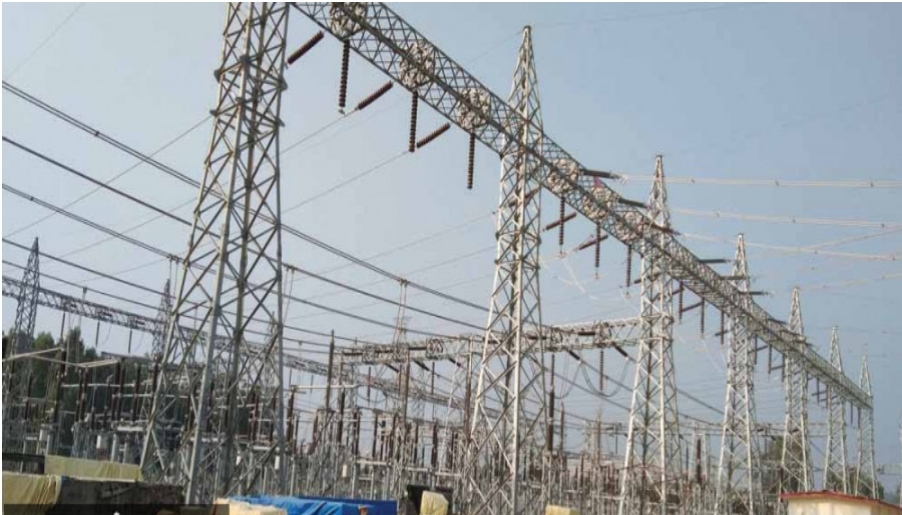Nepal presents fresh list of power projects to India for exporting electricity during monsoon
By
Prithvi Man Shrestha
Electricity export, transmission lines upgrade and joint investment in hydropower projects are on agenda of Nepal-India meetings taking place this week.

A way for Nepal to utilise its surplus energy is export it to India
Nepal Electricity Authority has submitted to India a fresh list of hydropower projects whose electricity it plans to export to the southern neighbour in the upcoming monsoon.
The NEA has been importing electricity from India since mid-December last year due to a production shortfall at home in the winter season when power plants, most of which are run-of-the-river type, generate less electricity due to reduced water levels in the rivers.
When all the power plants run in full capacity in the monsoon, the country is expected to face a situation of energy surplus as the peak hour demand is expected to remain at around 1700MW while the total production of electricity will reach around 2300MW by mid-July, according to the NEA.
The NEA will have to either increase domestic consumption or export surplus energy to India to prevent the excess energy from going to waste.
According to the NEA, it has submitted the list by incorporating the hydropower projects which were submitted last year too and some new ones whose combined capacity is 814MW.
“The projects include Upper Tamakoshi (456MW), Upper Bhotekoshi (45MW), Kaligandaki (144MW), Marshyangdi 69 (MW), Middle Marshyagndi (70MW) and Chameliya (30MW),” said Suresh Bahadur Bhattarai, spokesperson at the NEA.
In November last year, India’s Central Electricity Authority had given permission to Nepal to sell 39 MW of electricity produced by the 24MW Trishuli Hydropower Project and the 15MW Devighat Hydropower Project through the India Energy Exchange Limited. Both projects were developed with the southern neighbour’s assistance.
It was the first time that Nepal sold electricity in India through the southern neighbour’s power exchange market—India Energy Exchange Limited.
Besides these two projects, NEA had also sought India’s approval for exporting electricity of the Upper Tamakoshi, Upper Bhotekoshi and Marshyangdi and they have also been included in the fresh list.
As per the Procedure for Approval and Facilitating Import/Export (Cross Border) of Electricity, introduced by the Central Electricity Authority in February last year, Nepali entities are required to seek separate approval for each project from reletant Indian authorities for exporting electricity to India.
Despite Nepal’s consistent attempts to sell electricity from other projects including Upper Tamakoshi, India has yet to give its approval.
Officials at the NEA said that Indian authorities have shown reluctance to give approval to projects with Chinese components including involvement of Chinese contractors. For example, a Chinese contractor—SinoHydro Corporation was involved in the construction of the powerhouse of the Upper Tamakoshi as a contractor, not as an equity investor, and this could disqualify the project from selling electricity in India.
The Procedure for Approval and Facilitating Import/Export (Cross Border of Electricity) by the Designated Authority has imposed restrictions on power trading if there is investment from a country generating electricity with which India shares land border and the third country sharing land border with India, which does not have a bilateral agreement on power sector cooperation.
After submitting the fresh list of hydropower projects to the Indian authority, Nepal plans to lobby hard with Indian officials for export approval.
“It is one of our important agenda items for the meeting of joint secretary-level Joint Working Group and secretary-level Joint Steering Committee meetings scheduled for Wednesday and Thursday in Kathmandu,” said Chiranjeevi Chataut, joint secretary at the Ministry of Energy, Water Resources and Irrigation.
“They have already given us approval to export power from two projects and we will request them to give nod to more projects.”
Nepal had long been requesting the Indian side for a meeting of these mechanisms to remove bottlenecks in electricity export.
According to officials at the Energy Ministry and the NEA, other items of the agenda of the meeting include—joint development of large scale hydropower projects in Nepal through collaboration between the two sides, coordination for grid operation between Nepal and India, review of construction plan for 400kV New Butwal—Gorakhpur Transmission Line, tripartite discussion on power trading among Nepal, India and Bangladesh and improving existing cross-border power lines of different capacities between Nepal and India.
“There are a lot of items on the agenda and Indian facilitation for exporting power is an important one,” said Chataut.



